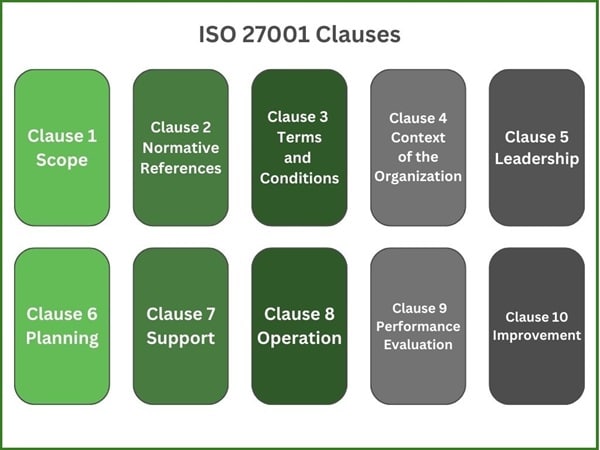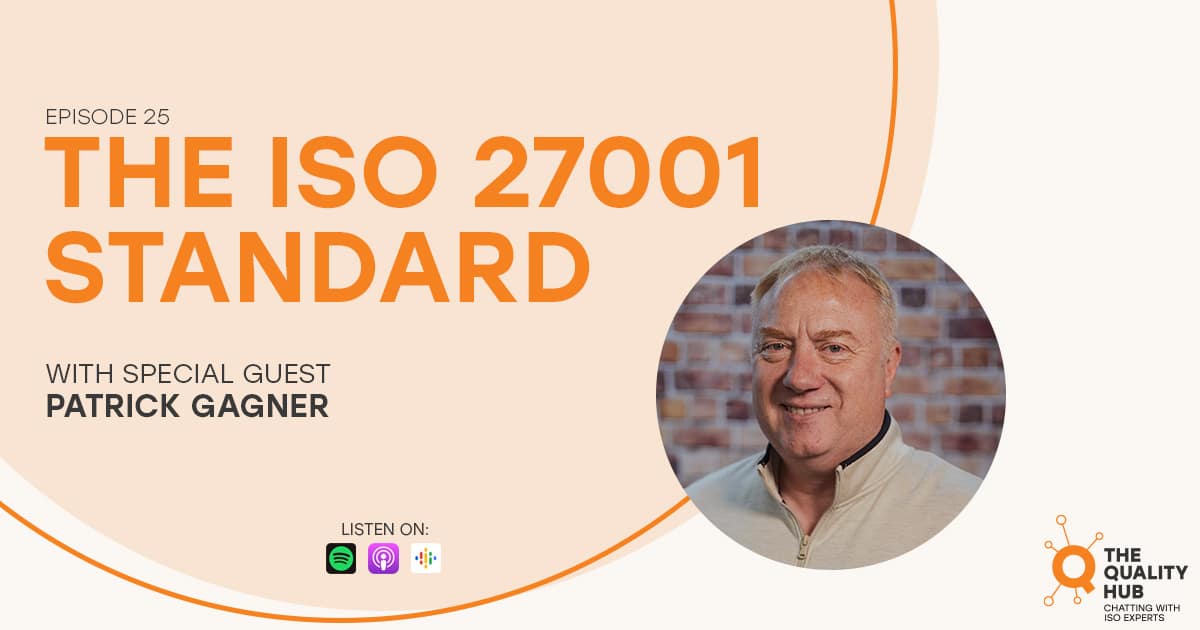ISO 27001 Clause 7 Explained
What is ISO 27001 Certification?
ISO 27001 certification is an internationally recognized standard for managing information security, designed to help organizations protect sensitive data through a structured and systematic approach. It outlines a comprehensive framework known as an Information Security Management System (ISMS), which enables businesses to manage, monitor, and continually improve the way they secure information. This certification is particularly valuable in today’s world, where data breaches, cyber threats, and information theft pose serious risks to organizations of all sizes and across all sectors.
At its core, ISO 27001 emphasizes a risk-based approach to information security. Organizations must identify and assess the risks to their information systems, considering both internal vulnerabilities and external threats. Based on this assessment, they implement a tailored set of controls to mitigate these risks. The certification ensures that an organization’s information security measures are both effective and aligned with its overall business strategy, ensuring that data is kept confidential, accurate, and available when needed.
Get a Free Quote
ISO 27001 Requires a Formal Audit
Achieving ISO 27001 certification involves a formal audit by an accredited certification body. This external audit assesses whether the organization’s ISMS meets the rigorous requirements of the ISO 27001 standard. If successful, the organization is awarded certification, demonstrating its commitment to safeguarding information and mitigating security risks. For many businesses, this certification not only enhances security but also builds trust with clients, partners, and stakeholders, positioning them as reliable custodians of sensitive information.
ISO 27001 certification also requires continuous improvement. As technology evolves and new security threats emerge, organizations must regularly review and update their ISMS to stay ahead of potential risks. This commitment to ongoing improvement helps certified organizations maintain a proactive stance on information security, ensuring their systems remain resilient and adaptable in an ever-changing digital landscape.
What is the ISO 27001 Clause 7 About?
ISO 27001 Clause 7 focuses on support within the Information Security Management System (ISMS). It addresses the resources, competence, awareness, communication, and documented information necessary to ensure the effective implementation and maintenance of the ISMS. Essentially, it outlines the key elements needed to enable and sustain information security practices within an organization.

Here is a breakdown of the main components of Clause 7:
1. Resources (Clause 7.1):
This section requires organizations to determine and provide the necessary resources needed to establish, implement, maintain, and continually improve the ISMS. These resources can include financial support, personnel, equipment, and any other assets required to ensure effective information security.
2. Competence (Clause 7.2):
Clause 7.2 emphasizes that personnel involved in the ISMS must have the necessary competence to perform their roles effectively. Organizations need to identify required competencies, provide relevant training or development, and ensure that employees have the necessary skills and knowledge to manage information security risks. This ensures that the staff managing the ISMS are capable and well-informed about security policies and procedures.
3. Awareness (Clause 7.3):
Employees within the organization must be aware of the ISMS and their roles in maintaining it. Clause 7.3 requires that organizations ensure employees are aware of the information security policies, the importance of information security, and the implications of not following the established procedures. Building a security-conscious culture within the organization is key to the success of the ISMS.
4. Communication (Clause 7.4):
This clause mandates that organizations determine what needs to be communicated, when it should be communicated, and who is responsible for communicating. This communication can relate to both internal and external stakeholders. Effective communication ensures that all parties involved, including employees, partners, and clients, are well-informed about the ISMS and any relevant security issues or updates.
5. Documented Information (Clause 7.5):
The final part of Clause 7 deals with managing documented information, such as policies, procedures, and records required by the ISMS. Organizations must ensure that this information is properly created, updated, controlled, and stored. It also includes ensuring that only authorized individuals have access to sensitive information and that such information is adequately protected throughout its lifecycle.
Overall, ISO 27001 Clause 7 ensures that the necessary resources, competencies, awareness, and documentation are in place to support the ongoing effectiveness and continual improvement of the ISMS, helping organizations maintain strong information security practices.
What’s the difference between ISO 9001 Clause 7 and ISO 27001 Clause 7?
The difference between ISO 9001 Clause 7 and ISO 27001 Clause 7 lies in their objectives and the specific focus of each standard. While both clauses address essential support functions like resources, competence, communication, and documentation, they do so with different priorities—one centered on quality management and the other on information security.
1. Scope and Focus
ISO 9001 Clause 7 (Quality Management System): ISO 9001 Clause 7 is concerned with supporting the effective operation of a Quality Management System (QMS). The goal is to ensure an organization has the necessary resources, skills, and infrastructure to consistently produce high-quality products or services that meet customer and regulatory requirements.
ISO 27001 Clause 7 (Information Security Management System): ISO 27001 Clause 7 focuses on supporting the Information Security Management System (ISMS). Its objective is to ensure that resources, competence, and communication are in place to protect the confidentiality, integrity, and availability of information. The emphasis here is on maintaining information security rather than quality.
2. Resources
ISO 9001 Clause 7.1: In ISO 9001, resources refer to providing the physical infrastructure, personnel, and environment needed to maintain product or service quality. This includes ensuring that equipment is maintained and suitable for production and that the workspace is conducive to achieving high-quality standards.
ISO 27001 Clause 7.1: In ISO 27001, resources refer to ensuring that the organization has the personnel, tools, and technology to implement and maintain the ISMS. The focus here is on resources that protect information assets, like security technologies, training for staff on cybersecurity best practices, and systems that support information security.
3. Competence
ISO 9001 Clause 7.2: In ISO 9001, competence relates to ensuring that staff involved in quality management have the necessary training and skills to maintain the QMS and meet customer requirements. The standard encourages organizations to identify necessary competencies and provide training to ensure products or services are produced consistently and to the desired quality.
ISO 27001 Clause 7.2: ISO 27001 emphasizes the competence of staff involved in information security. It requires that employees responsible for the ISMS, including those who manage security controls, understand their roles in safeguarding information. The emphasis is on ensuring that personnel are capable of managing information security risks effectively.
4. Awareness
ISO 9001 Clause 7.3: ISO 9001 requires organizations to ensure that employees are aware of how their roles contribute to product or service quality, and the impact of their work on customer satisfaction and compliance with regulatory requirements.
ISO 27001 Clause 7.3: In ISO 27001, awareness focuses on ensuring employees understand their roles in maintaining information security. This includes understanding the security policies in place, the importance of protecting sensitive information, and the potential consequences of failing to follow security procedures.
5. Communication
ISO 9001 Clause 7.4: Communication in ISO 9001 is primarily concerned with ensuring that relevant information regarding quality management, customer requirements, and process improvements is communicated effectively within the organization and with external stakeholders, including customers and suppliers.
ISO 27001 Clause 7.4: In ISO 27001, communication focuses on ensuring that relevant information about information security policies, procedures, and incidents is communicated to internal and external stakeholders. It helps ensure everyone involved understands their roles in protecting information and is informed about security threats or changes.
6. Documented Information
ISO 9001 Clause 7.5: ISO 9001 requires the organization to control documented information (such as policies, processes, and records) related to the QMS. This ensures that procedures are followed consistently and that records are kept to demonstrate compliance with quality standards.
ISO 27001 Clause 7.5: ISO 27001 also requires controlling documented information, but its focus is on ensuring that sensitive data and security-related documentation (such as risk assessments and security policies) are properly managed, protected, and accessible only to authorized individuals.
Summary:
ISO 9001 Clause 7 deals with supporting the quality management system by ensuring resources, skills, communication, and documentation are in place to consistently meet customer requirements and deliver high-quality products or services.
ISO 27001 Clause 7 focuses on supporting the information security management system, ensuring that the necessary resources, staff competence, communication, and secure documentation are in place to protect information and manage security risks.
In essence, the main difference is that ISO 9001 Clause 7 is oriented towards maintaining and improving product and service quality, while ISO 27001 Clause 7 is focused on protecting and securing information assets.

How Much Time Does it take to get ISO 27001 Certification?
ISO 27001 certification takes 4 to 6 months to complete. If you are implementing multiple standards at the same time, it could take longer.
How Much Does it Cost to get ISO 27001 Certification?
Depending on the size and complexity of your company, it can cost between $18,000 and $23,000 to prepare for ISO 27001 certification.
Helpful Resources: The ISO 27001 Standard Podcast
In this episode of “The Quality Hub” podcast, host Xavier Francis interviews Patrick Gagner, a Cyber Consultant at Core Business Solutions, about the ISO 27001 and Information Security Management System. Pat explains ISO 27001 as an Information Security Management System (ISMS), emphasizing its risk-based approach to safeguarding information confidentiality, integrity, and availability. Listen Now
What is Annex A?
With ISO 27001 certification, Annex A plays a critical role as it provides a comprehensive list of information security controls that organizations can use to mitigate risks identified in their Information Security Management System (ISMS).

These controls are categorized into 14 domains, covering various aspects of information security such as access control, encryption, physical security, and incident management. Annex A helps organizations identify the specific controls they need to implement based on their unique risks and business environment, ensuring that the ISMS is tailored to address relevant security challenges.
It’s important to note that Annex A is not a checklist of mandatory requirements but rather a catalog of controls that organizations can choose from as appropriate to their specific needs. During the risk assessment process, an organization identifies its security risks and then selects controls from Annex A (or alternative controls) to mitigate those risks.
Annex A essentially serves as a reference to ensure that the organization has considered a wide range of security areas, providing a structured way to safeguard the confidentiality, integrity, and availability of information.
The use of Annex A demonstrates a proactive and structured approach to information security within the organization’s ISO 27001 framework.
Customer Reviews


